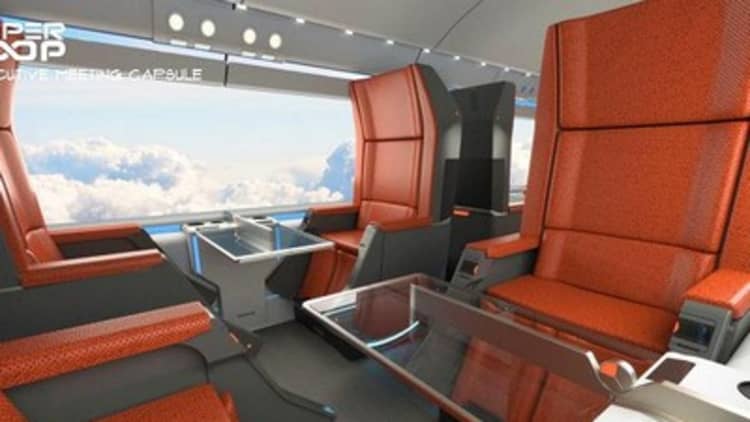
Ideas for Elon Musk's high-speed Hyperloop train are blazing ahead in full open source fashion.
Argodesign is the latest to add its vision to the fray, with the technology product design firm publishing its own take on what the high-speed transportation system could look like.
Though Musk first introduced his idea of the high-speed transportation system in a 57-page paper in August 2013, it's remained largely a guessing game of what the aerodynamic system would look like.
Read More
But if it's anything like Argo's design, consumers could be looking at a luxurious, augmented reality way to travel at super speeds.
"[Musk] put a great idea out in the marketplace, and he sort of challenged the marketplace to take the idea and improve upon it. And we decided to take that challenge," said Mark Gauger, founder of Argodesign.
Argo's concept outlines four modular capsules attached to what it calls the "Hyperloop Sled." Each of these capsules is removable. At departure and arrival, they would be lifted off the Hyperloop Sled by technology similar to that used in advanced, automated parking garages popular in Japan.
It would also include a place to store vehicles and cargo as well as three seating areas for passengers.
Read MoreWant to travel at the speed of sound? It's happening
While Musk suggested that the Hyperloop could reach speeds of more than 700 mph, Argo's design accounts for a system that would travel between 300 to 400 mph, to account for possible motion sickness.
This "reduced" speed would keep riders on the train longer, and therefore required the designers to include bathrooms and areas for passengers to walk around, according to the paper.
Still, there's no getting around the fact that this new mode of transport would involve passengers sitting in a windowless tube.
So, as a solution, the Hyperloop would have digital wall screens, called "Tripscenes," that could show images of the ocean or of pastures, as well as travel information.
"These screens have several different images displayed, in sync with travel, to help users forget the fact they are traveling in a windowless tube. Tripscenes can include clouds, pastures, even outer space and underwater scenes," the paper said.
If riders want to hold a business meeting—or if they're just feeling fancy—they can upgrade from Coach to the Executive Meeting Capsule that seats eight passengers in reclining chairs. There's also the Business Work Capsule, which includes private working pods.
The design took more than two months to complete, with six designers working intermittently while balancing other projects, according to lead designer Chipp Walters.
Musk's SpaceX recently announced that it will be holding a racing competition of Hyperloop prototypes in 2016.


